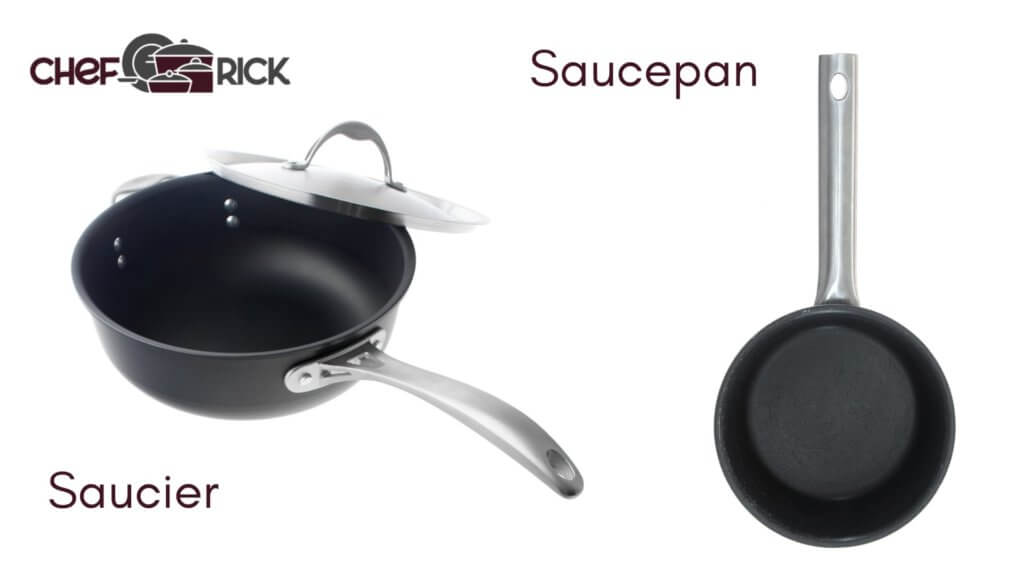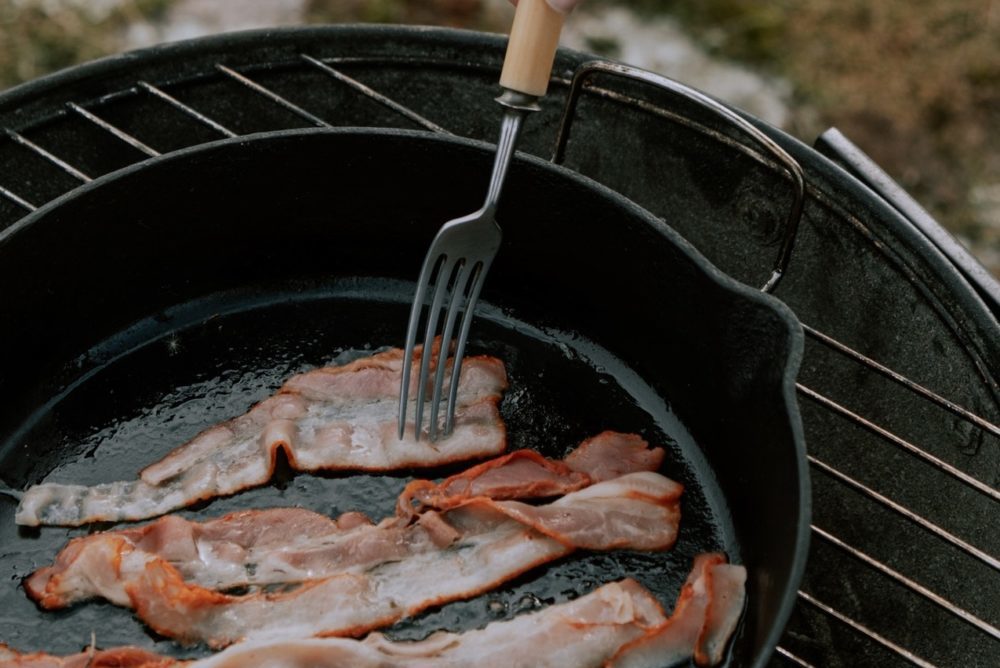Saucier vs. saucepan: similar names, similar looks… what’s the debate then? Here is a brief answer: the major difference between a saucepan and a saucier is the shape. A saucepan has straight sides and a flat bottom, while a saucier has curved edges paired with a round base. Other than the appearance, there are some differences in the two’s usability. To know more, read on!
What Do I Prefer: A Saucier Or A Saucepan?
A few years ago, I had a steel saucepan in my kitchen, all discolored and scratched after regular usage. When I decided to replace that old saucepan and did some research before making a purchase, I got to know that there are two types of pans: sauciers and saucepans. Now the names seemed familiar to me, and I thought they didn’t have much difference. But for a change, I got a steel saucier (to see if it’s any different) that was curvier than my old pan.
A few weeks in, and I loved this new pan. It was easier to handle, wouldn’t end up burned, and helped me stir foods like a pro (which I wasn’t at that time). And that’s how I learned the difference these little details make.
The Differences Between A Saucier And A Saucepan
If you’re in a place where I was, I am here to share my knowledge to ease this journey of yours. Today we’ll talk about the major differences between a saucier and a saucepan to know which one takes the cake. If you’re a home cook all set to make your kitchen functional, you’ll love this guide for sure.
1. Construction
This is the first difference you’ll notice. A saucepan has straight sides and a flat bottom, while a saucier comes with rounded sides and a rounded bottom. If you look at a saucepan from the side, it will appear rectangular. On the contrary, a saucier will look like a half-circle cup.

2. Performance
Now that we know about the profile, the real test begins: which one performs better? I have used both, and I can say without any bias that sauciers are better.
When you reduce sauces or make desserts in a saucepan, you end up with food gunk in the pan’s corners. This makes both cooking and cleaning difficult.
However, in a round-shaped saucier, you get no corners to deal with. You whisk and cook all you might, and the food doesn’t get stuck in the corners.
Although these pans’ performance depends more on the material, the overall shape also impacts it. With a curved, easy-to-handle surface, you cook more confidently.
A saucier’s sloped edges let your food slide right off, leaving no chunks behind. So saucier pans outperform saucepans in performance, hands down.
3. Cleaning
A saucepan’s straight edges also make it difficult to clean. Let’s assume your tomato sauce slightly burns in the pan. Now, if yours is a round, sloped pan, you don’t need to scrub it endlessly. Soak it for a while and clean it whenever you’re free.
But if your pan has a flat bottom with corners, it requires extra cleaning effort. You’ll have to scrub and use abrasive sponges to get the food gunks out, something no home cook likes.
Since food burning or overcooking incidents are normal in a kitchen, get a pan that doesn’t need much clean-up and is easy to wash.
4. Cooking Surface Area
A saucier’s bottom is wider than a saucepan’s, providing you with a wider surface area. When your cookware has a wide cooking surface area, water quickly evaporates from your food, eventually reducing the cooking time.
However, if you cook in a more narrow pot like a saucepan, water takes longer to evaporate. This difference in time can make your food soggy, so always be mindful of this feature.
5. Ergonomics
Cooking delicious meals takes effort and practice. If you’re a learner, make sure your cookware doesn’t lack in any aspect. When you confidently stir, whisk, and flip the ingredients, the dish comes out perfect.
Therefore, sauciers are designed to assist every cook. With a round-bottom saucier, you can easily stir your food, ensuring nothing remains undercooked.
This difference gives sauciers the upper hand. Most professional chefs and busy cooks prefer saucier pans, as they require lesser effort and perform better than the saucepans.
5. Versatility
Kitchen utensils are important, especially when you plan to make a perfect dish. As sauciers have sloppy bases and curved edges, you can use any kitchen utensil with them, for example, balloon whisks. Most spatulas, whisks, and spoons are compatible with sauciers, thanks to their ergonomic build.
On the contrary, you need specific utensils to work with saucepans. A balloon whisk doesn’t perform well with a straight-bottom pan because of its construction: you need a mellow spoon or whisk that changes shape to reach the bottom.
This slight difference depicts that sauciers are crafted to make kitchens more practical, while saucepans (even if they perform well) aren’t as ergonomic.
6. Recipes You Can Cook
Both pans in question cook almost the same things, with a little difference in the effort to stir. Boil potatoes, braise some foods, or reduce sauces: you may use these pans as you please. Like Fernand Point said: “It is the sauce that distinguishes a good chef. The Saucier is a soloist in the orchestra of a great kitchen.” Check out these sauce recipes!
7. Price Difference Between A Saucier And A Saucepan
It’s important to factor in the price when considering buying a saucier vs. saucepan for your kitchen. In general, a saucier pan is more expensive than a saucepan. So if your budget is tight, go for a saucepan.
So, Which One Is Better: A Saucier Or A Saucepan?
If you’ve read this far, you’d know why I favored sauciers in the beginning. These curved pans cook well, clean better, and help you prepare a sauce better: it’s always a win-win. Similarly, straight-edged saucepans are practical and durable but require extra cleaning effort.
So if you come across a saucier and a saucepan of a similar price range, I suggest you prefer the former. But if you’re on a budget, get a saucepan (sauciers are generally pricier), and you’re good.
Remember, a good cook knows his tools and makes the most out of them. On that note, I’d sign off. Happy cooking!







